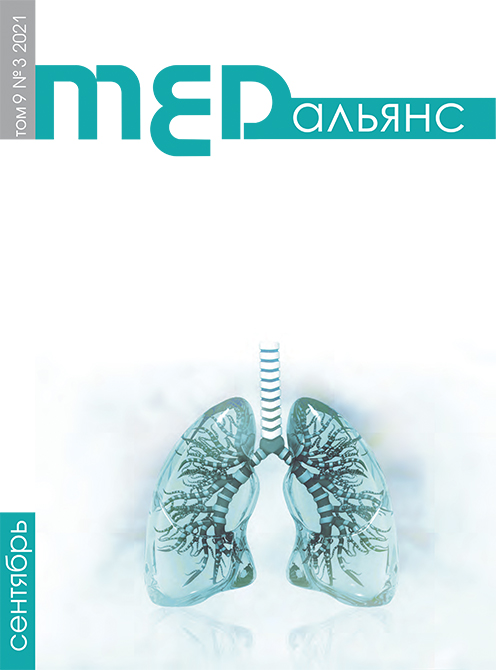Abstract
The aims of the study were to analyse the results of tuberculosis prevention in S.М. Kirov Military Medical Academy patients receiving gene-engineered biological therapy, to evaluate the topicality of this work and to define existing problems.
Methods. The study included 185 patients who were consulted by a phthisiatrician be cause of the gene-engineered biological therapy in the period of 2018–2019. Patients’ medical case histories were studied. Screening and monitoring of tuberculosis infection was carried out in accordance with the methodical recommendations of the Association of Rheumatologists of Russia.
Results. Among persons, referred to the phthisiatrician consultancy due to biological therapy, patients from department internal medicine clinic prevailed (76.2%) with key diagnosis: ankylosing spondylitis (Bekhterev’s disease) — 41.6%, and rheumatoid arthritis — 21.1%. Among gene-engineered biologicals, Golimumab (44.3%) and Adalimumab (18.5%) were most often used. For the analyzed period, none of those receiving gene-engineered biologicals, got sick with tuberculosis. This indicates the effectiveness of preventive measures. A single clinical case of active pulmonary tuberculosis, that was timely detected in a patient at the preliminary screening stage before the start of biological therapy, is demonstrated. The guidelines on this aspect of the tuberculosis prevention are analyzed. The current organization problems in examination and checks, dispensary dynamic observation and chemoprophylaxis are noted and illustrated by a clinical example of a patient with ankylosing spondylitis (Bekhterev’s disease) and signs of latent tuberculosis infection. Ways to solve these problems are suggested.
Conclusion. Prevention of tuberculosis in patients receiving gene-engineered biological therapy is atopical task, with a need to update and improve its regulatory and procedural guidelines.

